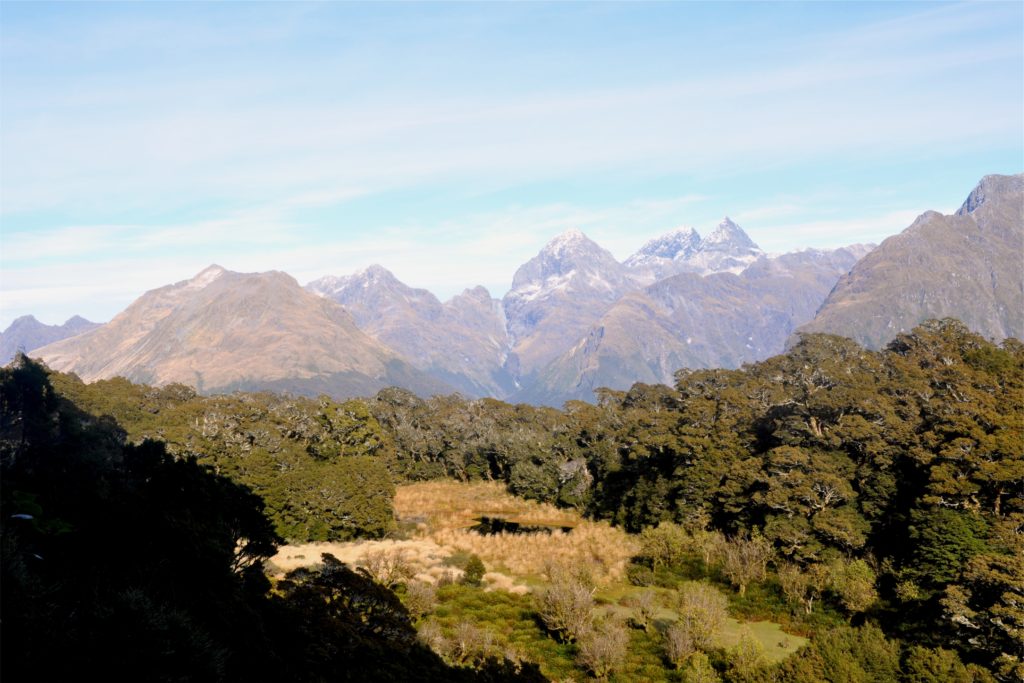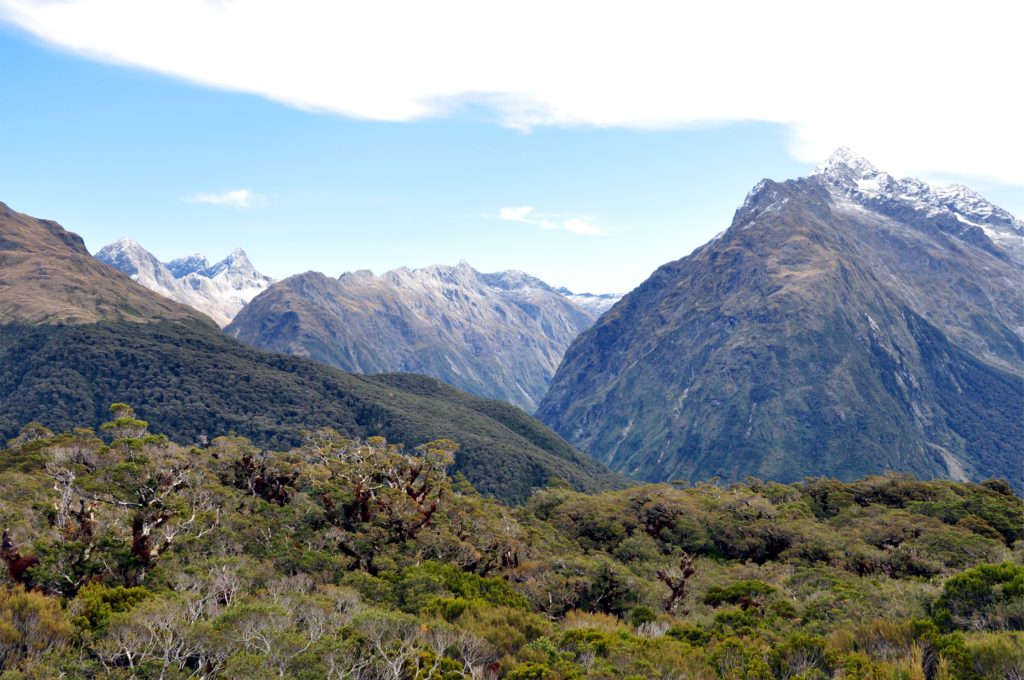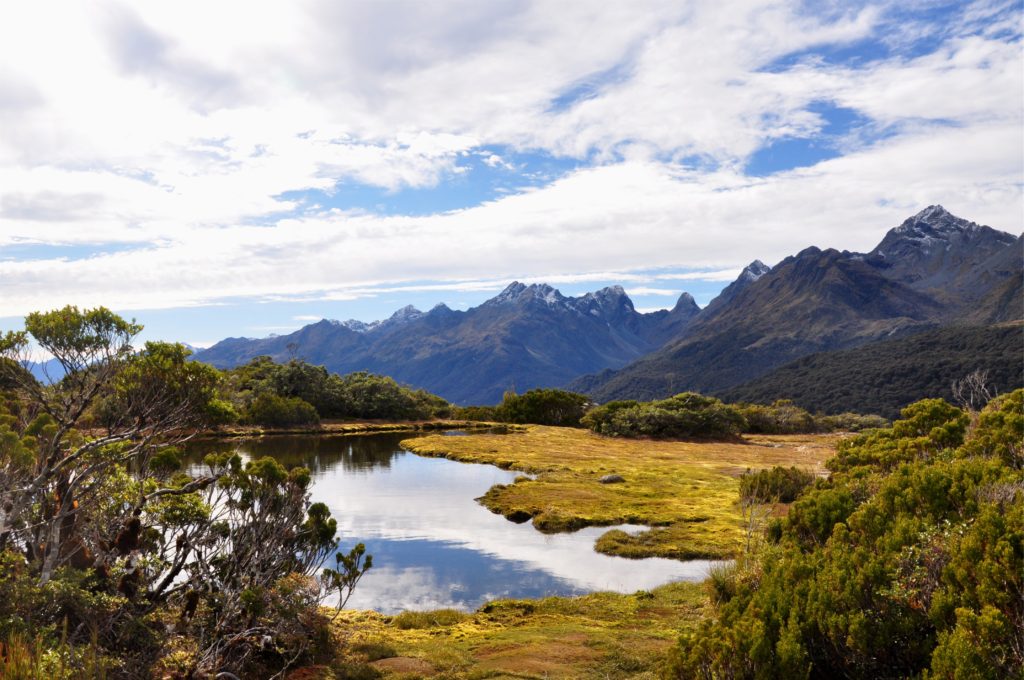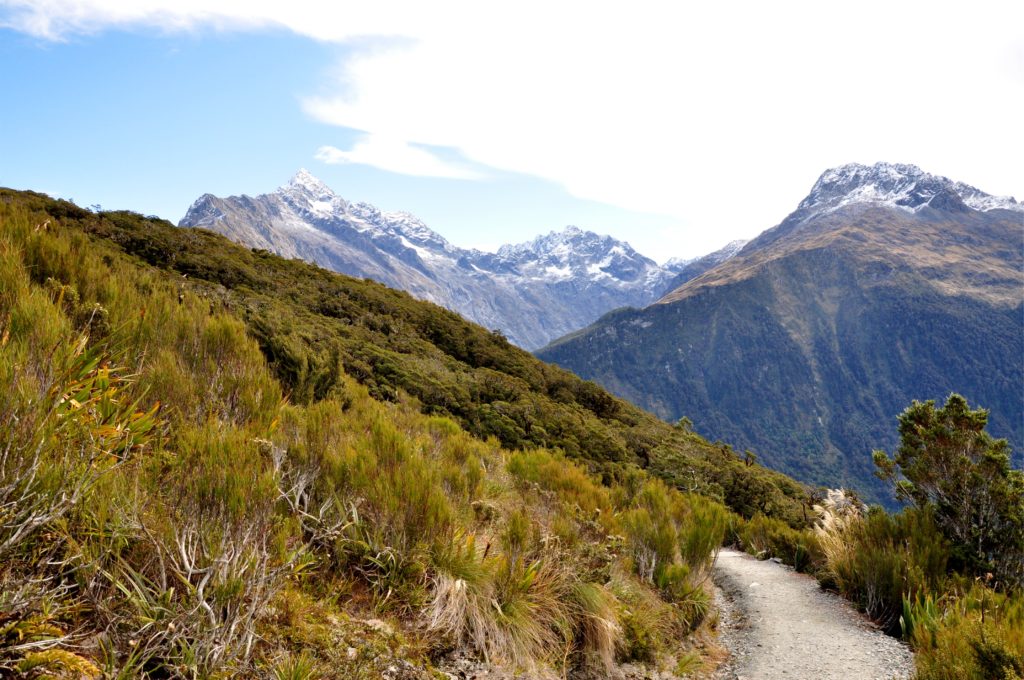Our third day on the Routeburn Track took us further up the Hollyford Valley. We had a short day of walking ahead of us, as instead of finishing the Routeburn Track, we would be stopping at a hut just before the end so that we could cross over to the Caples Track the next day to loop back towards Glenorchy.

As we continued up the valley, the track skirted the bush line, occasionally giving us glimpses across the valley to the snow covered peaks of the Darran Mountains when there was a break in the trees.

The gradual descent on the well-formed track made for easy hiking and we were able to enjoy our surroundings. As the sun climbed higher, we started to warm up, once again reminding ourselves how lucky we were to have had a run of dry days. Despite the good weather we have had when visiting Fiordland, the area has over 200 days of rain a year providing annual rainfall of 8,000 metres (310 inches) to nearby Milford Sound.

As we rounded a bend in the track, we started to hear the roar of one of the many waterfalls in the area. Despite the lack of rain (which we definitely thought was a good thing), at 174 metres (570 feet), the falls were still impressive. As we got closer, we realised that the track crossed a rough rock bridge at the base of the falls, and as we picked our way across the stones we could feel the spray from the falls.

As the trail continued to descend we found ourselves back in the beech forest that is typical of the area. It felt as though every surface in the forest was covered with plants or moss, making it easy to see the effects of all the rain the area typically receives.

We had learnt from the rangers in the huts that this year is a ‘mast’ year for beech trees in New Zealand. This means that this year there will be an unusually high seeding rate in the native beech forests which is likely to have a significant impact on native bird species as a result of increased predators. The hut wardens and rangers, all of whom work for the Department of Conversation (DOC), were worried about what this would mean for the native birds and the goal of having New Zealand predator free by 2050; the have produced a really great summary of the problem this year here.

We continued to descend gently through the forest and soon found ourselves crossing Pass Creek. A few minutes later Lake Howden came into view and we walked through the clearing to the hut which was on a small rise overlooking the lake.

We got settled at the hut and had a late lunch overlooking the lake before setting out along the track towards Key Summit. Another side-trip off of the Routeburn Track, we wanted to take advantage of the short day to explore this area.

At 918 metres (3,011 feet) above sea level, it wasn’t quite as high as Conical Hill, but nevertheless, the unique ecosystem on the plateau surrounding Key Summit, and the spectacular views made it well worth the extra effort of making one more climb.

The views from the loop track changed constantly, allowing us to pick out places we recognised from previous visits. From our vantage point we had a great view of Lake Marian and the wooden lower slopes of the valley we had hiked alongside the creek at the end at the end of the Hollyford Track.

The high alpine wetland on Key Summit is a pretty harsh environment, and the poor soils mean that plants struggle to get enough nutrients. As a result, Key Summit is host to two different carnivorous plants, the Sundew and Bladderwort. Unfortunately this late in the season, we weren’t able to spot either of them from the track, but reading about their cunning ways of trapping creatures was fascinating. The Bladderwort has a series of vacuum sacs at the base of the leaves and stems, passing bugs trigger the trapdoors which open and sucks the bug in before closing again!

Seeing all the plants in a different light, we continued around the loop track and were able to look out back towards Harris Saddle and the distinctive peaks that towered over Lake Mackenzie Hut. For just a couple of days hiking, it seemed as if we had covered a good distance, and we had certainly seen a variety of landscapes.

Setting off back down the track, we rejoined the Routeburn Track and retraced our footsteps to Lake Howden Hut. We enjoyed an early night whilst contemplating our hike for the next day. We would be leaving the ‘Great Walk’ and setting off on the Caples Track. Away from the Great Walks, the huts tend to be spaced further apart and with another saddle to cross and a good distance to cover we figured a good night’s sleep would help set us up for the adventure.
